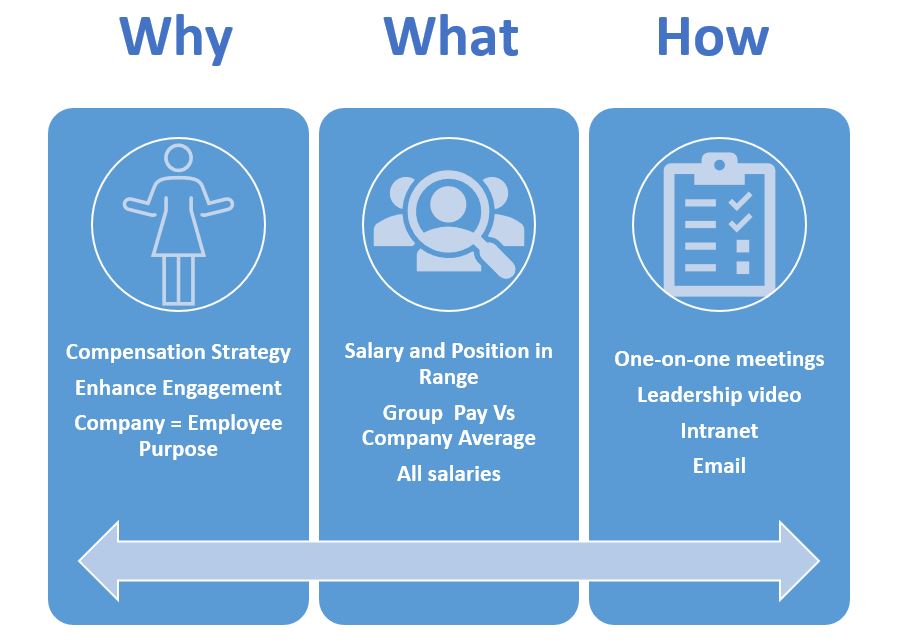Employers are proving to be flexible and resilient in the face of a global pandemic. Many are adapting by implementing remote work and more robust health, safety, and wellness measures. But how is COVID-19 impacting business strategy and compensation? To answer that question, the MIT Sloan Management Review Forum asked its panel of experts if the pandemic has permanently changed how companies should think about business strategy. Most respondents (56%) either agreed or strongly agreed.
Ongoing business challenges are serving as a catalyst for Environmental, Social, and Governance (ESG) initiatives as employees seek purpose in their work and stakeholders put pressure on companies to address climate change, social and workforce inequities.

As an organization’s business strategy evolves to address these and other factors, such as labor shortages, inflation, and supply chain disruptions, compensation also needs a fresh look for companies to support its business direction. With that in mind, here are guidelines to consider when developing or adjusting your organization’s 2021-2022 compensation plan:
Compensation Strategy Research Steps
Compensation strategy is unique to each company. Therefore, a thoughtful assessment of the following internal issues and external trends serves as a great starting point:
- Gather information and perspectives from stakeholders including directors, customers, executives, managers, and employees.
- Review the company’s purpose, values, culture, business strategy, and human resource strategy. Consider the organization’s business cycle stage: inception, growth, and maturity.
- Survey employees to determine their priorities. Age of employees can affect their choice of compensation plans.
- Benchmark the organization versus business competitors and competitors for employees. This step shows where you are versus competition but is not necessarily where you want to position yourself. Your compensation programs need to reflect your unique strengths, purpose, and strategies.
With this information in hand, employers can create a compensation plan designed to recruit and retain top talent, increase job performance, and improve workplace satisfaction. The compensation plan should address all the components of employee compensation, including base and variable pay. Lappley & Associates recommends the following:
Establishing Competitiveness Targets
Market competitiveness target is a key element of an organization’s compensation strategy and can vary by job function and job level. Company size, revenues, geographical and industry data, and economic trends also influence competitiveness targets.
There are two ways to establish competitiveness targets for an organization. The first is the traditional way. That is, determine a target competitiveness level for base salary and total cash (base plus incentive/bonus). Then, assess the mix of fixed and variable compensation. For example, target base at median and total cash target at the 60th percentile for middle managers.
The second approach is to specify the mix desired of fixed and variable pay. For example, target 70% of compensation as fixed and 30% variable for senior management. Then position base at the 40th percentile and estimate the total cash competitiveness.
Although market median is often chosen as the competitiveness target, there are circumstances where companies will want to target above or below the median. For example, if a particular skill is in short supply pay may need to be above the median to attract the right talent. However, if employee retention is steady, the talent pool is plentiful, and more generous benefits make up for lower pay it may be possible to pay below the median.
What Should be Rewarded
The typical compensation plan sets base salaries and calculates salary ranges for various positions within a job category. The intent is to establish job worth and reward ongoing performance. As employees acquire new skills and responsibilities, pay raises can be adjusted as goals are achieved. Further compensation design elements include salary range width, the pace an employee should move through the salary range, rationale for segments of the salary range, approach for employees working remotely, and whether short-term differentials will be used.

To drive better business outcomes, employers frequently use incentives that can be earned on top of base salaries. Annual incentives reward annual performance. Long-term incentives are meant to reward a longer performance cycle, from two to five years. Design elements include eligibility, incentive opportunity, performance feedback, and payment or holdback schedule. Performance measures typically include annual or long-term profitability, revenue targets, individual achievement, and operational goals. Measures of attainment of ESG initiatives, principally diversity, equity, and inclusion goals, are becoming more prevalent in incentive programs.
Pay For Performance
Pay for performance refers to bonuses or incentives and salary increases that are contingent on employee performance. The idea is to encourage employees to pursue goals rewarding excellent performance for higher pay or other rewards. Higher achieving employees earn more than workers performing satisfactorily when they hit certain benchmarks. Data shows that the ratio of base salary increases for excellent performance is around 1.7 times the increase for fully satisfactory. Organizations that emphasize performance may push the ratio to 2.0 times or more.
At the start of the pandemic, companies increased the variable pay share of annual salary packages because of economic uncertainty and in a bid to reduce costs. No doubt, variable pay will play a significant role in compensation plans in the year ahead as companies adjust to volatile business cycles demanding more flexible pay structures.
Communications and Pay Transparency
Businesses that embrace communication and pay transparency benefit in a variety of ways. Companies that are more open about pay earn greater trust from employees. In addition, pay transparency makes it easier to make progress towards achieving diversity, equity, and inclusion goals. Finally, employees who understand what they earn, how, and why will be more fully engaged and retained.
Compensation Strategy in the Future
Many companies have repositioned themselves during the pandemic reflected in their approach to compensation. And as the tough period slowly ends, numerous organizations wish to get back to normal. However, major threats such as climate change, digitization, and growing inequity pose potential business challenges. As companies continue to adapt and update their business strategies, they must also alter their approach to compensation.
Contact Us
If you would like more information on this topic or help with your compensation strategy, please call or email me at (847) 921-2812 or nlappley@lappley.com.
























